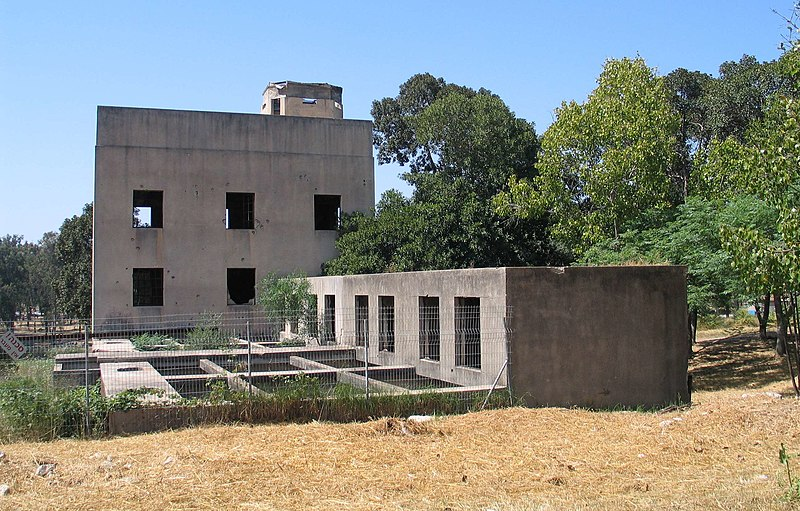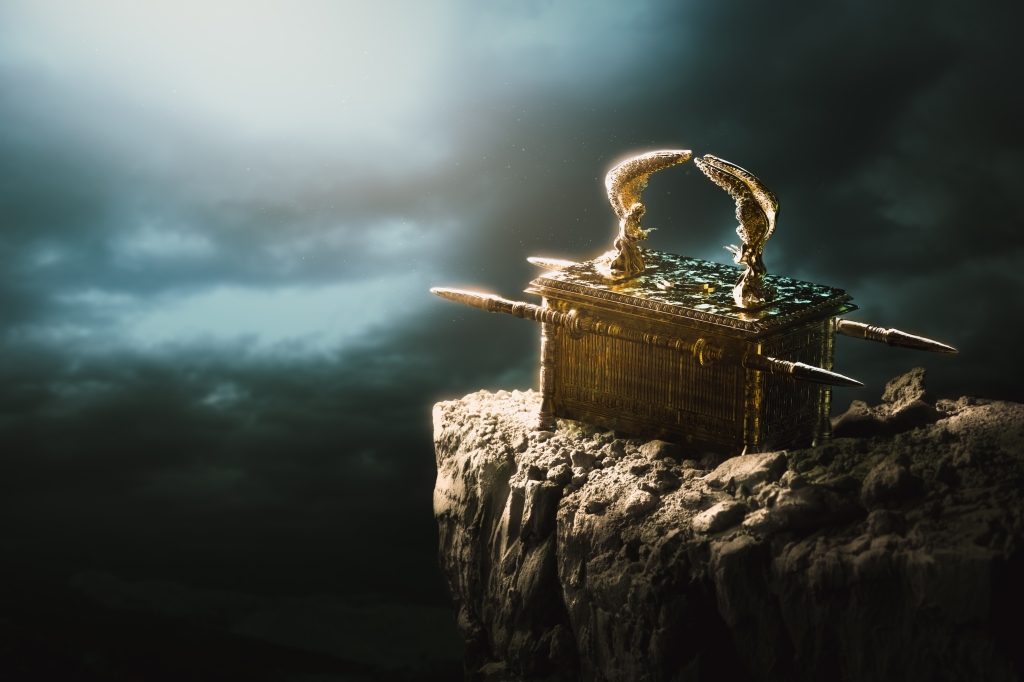
Today we are exploring a unique site that possesses everything a visiting tourist would like to see! It is very centrally located, has incredible historical significance (the events that occurred here are stranger than fiction) and is kid friendly. The nature here is beautiful, and there are ponds with battle boating, plenty of parking and it’s even inexpensive to visit! Additionally, this wonderful place has well preserved ruins from the multiple empires which have ruled the country over the last 4000 years, an extreme rarity (although Israel is well known for having well preserved archology from the different empires, it is uncommon to find them all at one site). One would think that tourists would be clamoring to visit, but this is not the case. Tourists seldom visit here, and even most Israelis are unaware of this location in their midst. So, let us now explore this site together!

Photo Credit: Shutterstock
The obvious question is why there are so many buildings and fortifications from different time periods here? The answer is that this location rests on an extremely strategic route. At one time, Egypt and Mesopotamia were the world’s superpowers, and the ancient highway which led from one to the other went through here.

Photo Credit: https://www.bibleodyssey.org/en/tools/map-gallery/v/map-trade_routes-g-01
Although the entire road needed to be protected, empires prioritized control of this particular section (known as the Aphek pass) because this location was very narrow (only 2 kms long). The Yarkon River begins just a few feet to the west of Aphek making the land swampy, hardly the place to build a road. Just a short distance to the east was the mountainous region of Samaria. This was, therefore, the only place a road could be built, and whomever controlled this fort would essentially be in control of ancient travel.

Photo Credit: Bukvoed – Creative Commons Attribution 4.0 International
The first to build here was the Canaanites (see Joshua 12:18). In the 15th century BCE, Pharaoh Thutmose III invaded Israel and conquered many cities, including Aphek. For the next 350 years (overlapping with the time period when the Israelites were slaves in Egypt) Egypt ruled the land. They allowed the Canaanite city kings to continue their rule as long as they didn’t rebel, although they appointed Egyptian governors to oversee them.

Photo Credit: Shutterstock
Several ancient documents written in Cuneiform (the ancient international language of that time) were found here.
When the Children of Israel left Egypt and Pharaoh’s army drowned in the Red Sea (see exodus 14) Egypt lost control of its overseas empire, including Israel, and once again the 31 Canaanite city states gained independence. When Joshua entered Israel, he fought 31 kings. Although he defeated the King of Aphek, the city itself was taken by the Philistines, setting the stage for arguably the most dramatic battle in biblical history!

In the days of Samuel the prophet, the Israelites waged war against the Philistines (with the former encamped at nearby Ebenezer and the latter at Aphek). The battle was a disaster for the Children of Israel, with around 4000 troops having been slaughtered. To turn the tides of war, the Israelites went to Shiloh, then home to the Tabernacle to retrieve the sons of the High Priest (along with the Ark of the Covenant) as merit in battle with them (see 1 Samuel 4). G-d, however, had other plans. Thousands of Israelite soldiers were killed, the Ark of the Covenant was captured, and the sons of Eli were killed (in fulfillment of G-d’s promise made in 1 Samuel 3). The Ark of the Covenant would be dramatically returned to the Israelites several months later (see 1 Samuel: 6. For more on the return of the Ark to the Jewish people, click here).
During the time of Alexander the Great, one of the most shocking events in world history occurred here! At the tender age of 20, Alexander became King of Macedonia and began his immensely successful campaign to take over the known world (circa 336 BCE). After conquering Lebanon, he entered Israel and was told falsely by the Kutim (Samaritans) that the Jewish people were revolting against Greece and that it would be in their best interest to destroy Jerusalem and the Temple (they were hoping to rid the land of the Jews so that they could take control). Upon hearing this, Alexander was irate and went to Jerusalem to punish the “traitors”. The leader of the Jewish people and High Priest at that time was Simon the Just. When Simon heard that Alexander was coming, he put on his High Priest garments and walked with his entourage towards the powerful ruler all night long carrying torches (according to Jewish law, it’s usually forbidden for the High Priest to wear his Service garments outside the vicinity of the Temple. Since this was a matter of life and death, it was permitted and even required). The two sides met at Aphek, where Alexander dismounted from his horse and did something that shocked everyone; he bowed down to the High Priest! The Greek generals that witnessed this were shocked and disgusted by this, asking “Your Majesty, why do you bow before a Jew?” Alexander replied “This is no mere Jew but one with the appearance of an Angel. Before I go into battle, when I am to be victorious, his vision appears to me. Should I not bow to them?” Alexander than asked him “Why have you come to see me?” The High Priest wisely answered “Is it possible that the very Temple where we pray for you and your empire should be destroyed because of the misleading requests of these idolaters?”. Alexander (upset about being lied to by the Kutim) told the priest “I am placing them in your hands to do with them as you so please.” To celebrate, Alexander demanded that a statue of him be placed in the Temple (which is forbidden by Torah law). Simon the Just bravely answered that while he could not honor this request, he would decree that every Jewish boy born that year be given the name Alexander (which is how it became a Jewish name which is still used in Torah observant communities today).
The city reached its zenith during the Roman period when the infamous King Herod (Rome’s puppet king of Israel), greatly expanded it with major building projects in 9 BCE. He renamed it Antipatris after his father (he particularly chose this area because of its rich soil, abundance of water, and strategic location).

Photo Credit: Bukvoed – Creative Commons Attribution 4.0 International
Because the city was conveniently situated on the Jerusalem-Caesarea route (the two most important cities in Israel of that era), this city played a large role in the Great Jewish Revolt (66-73 CE). When the Romans were on their way to put down the rebellion in Jerusalem, they were attacked here and badly defeated. The next year, General (and later Roman Emperor) Vespasian came here to settle the score. After a three-day battle, the Romans finally conquered it and destroyed the city (although they would soon build it back up).
After the city was restored, it seems to have retained a major Jewish presence. According to Jewish sources, the righteous sage Rabbi Akiva had 24,000 students between the cities of Geva and Antipatris. The city continued to flourish until Byzantine times when a massive earthquake destroyed it (and most of Israel). It would never recover, though in 1573 a massive Ottoman fortress was built to protect the Damascus-Cairo highway it stood on (with 100 horsemen and 30-foot soldiers stationed here).

Photo Credit: Shutterstock
Because Tel Aphek sits atop the source of the Yarkon River, the British (who took control from the Ottoman Turks in WW1) built an elaborate pumping station to pipe its water to Jerusalem (to this day it is still the main source of fresh water for Jerusalem, though the originally British system is no longer in use).

Photo Credit: Bukvoed – Creative Commons Attribution 4.0 International
The park has a lot to offer tourists of all ages and interests. If you are looking for something off the beaten track on your next trip to Israel, I highly recommend you visit here!
(All photos are either licensed by the author or available for public usage)



















